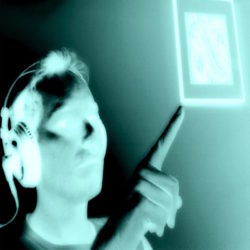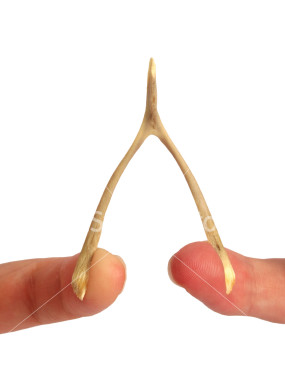Julian Walker is getting some discussions going about mind-body transformation, a favorite topic of mine. In fact, about ten years ago I wrote an entire master’s thesis about embodied transformation, and after mentioning this to Julian, he’s asked me to say a bit about it. For a while now I’ve intended to revisit and expand on these ideas, in light of another decade of living. Perhaps this (relatively) brief overview will inspire me to pick up the thread and follow it along a bit further:
Well Julian, it’s like this. At some point it occurred to me that my whole point of view, my basic mode of experiencing life, would shift during certain moments from a dissociated, half-alive, going through the motions type thing, to a wakeful, clear-minded, energized state of pure awesomeness. Basically, I became fascinated by my peak experiences. There seemed to be a quality about them that was not dependent on content or context. In other words I felt like the same process was happening regardless of what I was doing. I got the funny feeling that I was peaking or “peeking” into the same place, or entering the same state of consciousness, whether I was hitting a groove on the guitar, entering “the zone” on the athletic field, writing a poem or a song, having great sex, communing with nature on a hike, or getting showered with insight during meditation.
My master’s thesis was really nothing more than a sustained inquiry into this process of personal transformation, which I defined as a shift in one’s basic mode of experiencing toward greater vitality, awareness and expressiveness. I found that various theorists and practitioners understood transformation in different ways, but I also noticed a common thread between the approaches that moved me the most. Psychologists interested in transformation talked about the movement from unconsciousness to consciousness; the spiritual folks spoke of the journey from ignorance to awareness or enlightenment; creative thinkers were interested in moving from inside to outside “the box”; somatic practitioners worked toward refinement of sensitivity and an expanded range of movement.
It was the somatic perspective, I thought, that could ground an integral, multilevel understanding of the transformative process. I was searching for some basic principles of transformation with which I could generate a unique set of practices, in a sense building an Integral Life Practice program from the ground up. I appreciated the maps of others, but I yearned to wander from the well-worn paths, to know the joy of making my own way through the wilderness. I also felt that the somatic perspective, especially as understood by Thomas Hanna, had the potential to radically transform our understanding of both psychological health and spiritual growth. I couldn’t shake the feeling that if these loftier endeavors were plugged into an understanding of somatic education, they would become far more efficacious paths, less prone to pitfalls.
Hanna rejected the distinction between psychological and physical problems, instead using the term “functional problem” to describe limitations of the unified organism in its capacity for both self-sensing and self-expression. Central nervous system functioning is fundamental to all behavior and experience, according to Hanna. Ken Wilber would agree with this, although he would point out that psychological and spiritual levels of being are more “significant.” In any event, from a somatic viewpoint, there’s no separation of psychological from physical health, and the majority of the typical “mental” and “physical” diseases of our society are learned as people adapt to a culture that supports dissociation and alienation.
So, if we want to ground our understanding of transformation in the living body, we can start with the most fundamental aspect of the central nervous system–the division between sensory and motor processes. Our perceptions of the world outside our bodies, as well as our perceptions of our internal bodily states, come into the brain via sensory nerves. And every action we express, every movement we make in the world and inside our selves flows out from our brain and down through the spine by way of motor nerves. This structural division is functionally integrated within a single neural system, the brain integrating the incoming sensory information with outgoing commands to the motor system.
The continual interplay of sensory information and motor guidance is referred to in contemporary neuroscience as a feed back system which operates in loops. As Hanna describes it, “the sensory nerves ‘feedback’ information to the motor nerves, whose response ‘loops back’ with the movement commands along the motor nerves. As movement takes place, the motor nerves ‘feedback’ new information to the sensory nerves.” Acknowledging that there are indeed physical and psychological problems that are the result of structural deformity and/or physiological imbalance, Hanna argues that many of the health problems afflicting people today are not about bodies or minds breaking down, but about individuals who have lost conscious control of their somatic functions. These functional problems are ones in which the person suffers from a loss of memory: the memory of what it feels like to move in certain ways, and the memory of how to go about moving in certain ways. This type of memory loss is what Hanna calls sensory-motor amnesia, a state of diminished self-awareness that is quite reversible–that is to say, a state that can be transformed.
Sensory-motor amnesia involves a dual loss of both conscious control of a particular area of motor action and conscious sensing of that motor action. As the human organism adapts to repeated stressful conditions, whether resulting from cultural conditioning or from uncontrived environmental circumstances (like extreme ecological conditions or biophysical trauma), there is a loss of conscious voluntary control of specific somatic functions. For example, faced with the stress of ridicule and/or punishment for crying or screaming out in public, the sad or angry child will contract certain motor areas of the soma (i.e. muscles) in an effort to hold back their authentic response. Crying or yelling out simply cannot happen when the corresponding muscle systems are held motionless, because crying and yelling are the movements of those motor areas. As this stressful response of contraction is activated again and again in similar situations, the response eventually becomes habituated and the child loses awareness of it (i.e. the muscle contractions can no longer be consciously sensed) and control of it (i.e. the child cannot voluntarily relax the contractions). The child has been successfully conditioned not to emote in public.
This innate tendency of human beings to develop automatic, unconscious responses in the face of stressful stimuli (i.e. the process of conditioning) was well documented by researchers such as Pavlov and Skinner. Hanna describes the loss of conscious volitional control as sensori-motor amnesia so as to emphasize two essential facts: 1) habituated, involuntary responses, like all somatic processes, are a reflection of sensori-motor functioning, and 2) what becomes unconscious, forgotten, or unlearned, can become conscious again, remembered, and re-learned. Thus, sensori-motor amnesia can be reversed by somatic learning.
Somatic learning is a process that results in the expansion of an organism’s range of volitional consciousness. This process takes advantage of the feedback/loop nature of the sensori-motor system and is described by Hanna in the following way:
“If one focuses one’s awareness on an unconscious, forgotten area of the soma, one can begin to perceive a minimal sensation that is just sufficient to direct a minimal movement, and this, in turn, gives new sensory feedback of that area which, again, gives a new clarity of movement, etc. This sensory feedback associates with adjacent sensory neurons, further clarifying the synergy that is possible with the associated motor neurons. This makes the next motor effort inclusive of a wider range of associated voluntary neurons, thus broadening and enhancing the motor action and, thereby, further enhancing the sensory feedback. This back-and-forth motor procedure gradually ‘wedges’ the amnesic area back into the range of volitional control: the unknown becomes known and the forgotten becomes relearned.”
So it is that a diminished state of self-awareness and a diminished range of conscious responsiveness can expand and transform at the basic level of sensor-motor functioning. Our emotionally inhibited child, now an adult, can learn to pay focused and sustained attention to subtle sensations in the forgotten contracted muscle areas and thereby recover in awareness the sense of being perpetually held back and fatigued. With this awareness that “I’m contracting my muscles” and “I’m holding myself back,” comes the realization that one can now begin to relax those inhibitions.
Although I’ve chosen to illustrate this transformative process with what would normally be considered a “psychological” example–the emotionally inhibited person–, the practice of somatic education (as typified by Hanna’s work and Feldenkrais’s Functional Integration) is normally applied to what are thought of more as “physical” problems. Middle-aged to older adults with gross-level range of motion restrictions or distortions, often the result of trauma or injury, are more typically the clients of somatic therapies. Many people who seek out and engage in somatic practices are primarily looking to feel better and healthier on a physical level, not especially considering the implications the work has for whole-person growth and healing.
The psychological implications of “body work,” although increasing evident and acknowledged, seem to be less than adequately understood. The example of the emotionally inhibited person hints at how an understanding of sensori-motor function can contribute greatly to psychological perspectives of personal transformation and vice versa. An integral viewpoint promises a deeper understanding of how various transformative practices can be utilized in a complimentary fashion to most effectively support an individual’s capacities for self-regulation, health and growth. This integral understanding also allows for the articulation of basic principles that can be applied to any number of experiences and life situations, principles that anyone can use to create their own unique practices and approaches to personal transformation.




